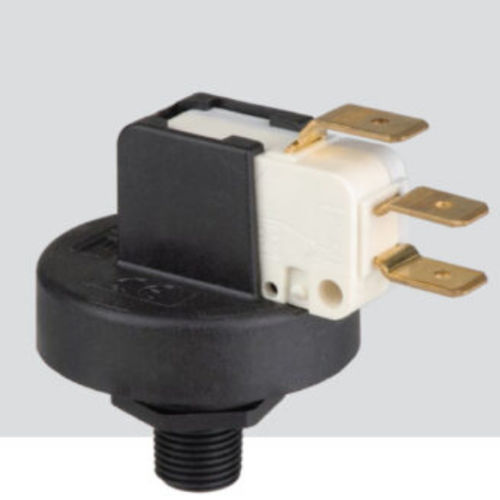
- Detection - Measurement
- Flow, Pressure and Level Measurements
- NO pressure switch
- GTE Elettromeccanica Srl
NC pressure switch SLNOplasticbrass
Add to favorites
Compare this product
Characteristics
- Contact type
- NC, NO
- Material
- plastic, brass
- Applications
- industrial
- Other characteristics
- adjustable, compact
- Pressure range
Max.: 6 bar
(87.02 psi)Min.: 0.2 bar
(2.9 psi)- Process temperature
Max.: 125 °C
(257 °F)Min.: -20 °C
(-4 °F)
Description
Compact device used in heating system boiler to check minimum water pressure.
Water temperature - < 90°
Voltage - 5Vdc/24Vdc - 230Vac (16A)
Connection terminal - 6.3 x 0.8 mm, RAST 5 or RAST 2.5
Hydraulic inlet (PLASTIC) - See connection pag. 6-7 catalogue
Protection Class - IP00
Weight - ∼ 22 grammi / grams
Approval
EN60730-1, EN60730-2-6, EN60335-1-2002
All our products conform to the 2002/95/EC European directive (RoHS).
Storage
Avoid the transducer coming into contact with powders
Do not store in locations with humidity condensation
Pressure switch with Hydraulic Connection - John Guest
Feature: - Food contact material
- - High hystérésis (The high hystérésis is a necessary feature for stable opération in automatic systems)
- - Long working life and small dimensions
- - Maie and Female connection
Pressure switch with Hydraulic Connection - Gas thread and Adjustable connection
Feature: - Maie and Female Gas thread (also with brass adapter) or adjustable connection
- - Différent configurations: Faston (COM + NO/NC - COM + NC+NO), vertical fastons, RAST 5, RAST 2.5 (with cover) and soldered wire with coverage
- - Long working life and small dimensions
- - High and Low pressure range
Pressure switch with Hydraulic Connection - Metallic body
Feature:
- - Heavy duty industrial applications
- - High pressure
- - Long working life and small dimensions
Catalogs
Product Catalogue
20 Pages
Product Catalogue 2019
20 Pages
Related Searches
- Pressure switch
- Adjustable pressure switch
- Pressure transducer
- Liquid pressure switch
- Flow switch
- Differential pressure switch
- Gas pressure switch
- Analog pressure transducer
- Industrial pressure switch
- Membrane pressure transducer
- Stainless steel pressure transducer
- Compact pressure switch
- Relative pressure transducer
- Material flow switch
- Water pressure switch
- Gas pressure transducer
- Vacuum switch
- Liquid pressure transducer
- Sensitive element pressure transducer
- Magnetic flow switch
*Prices are pre-tax. They exclude delivery charges and customs duties and do not include additional charges for installation or activation options. Prices are indicative only and may vary by country, with changes to the cost of raw materials and exchange rates.





